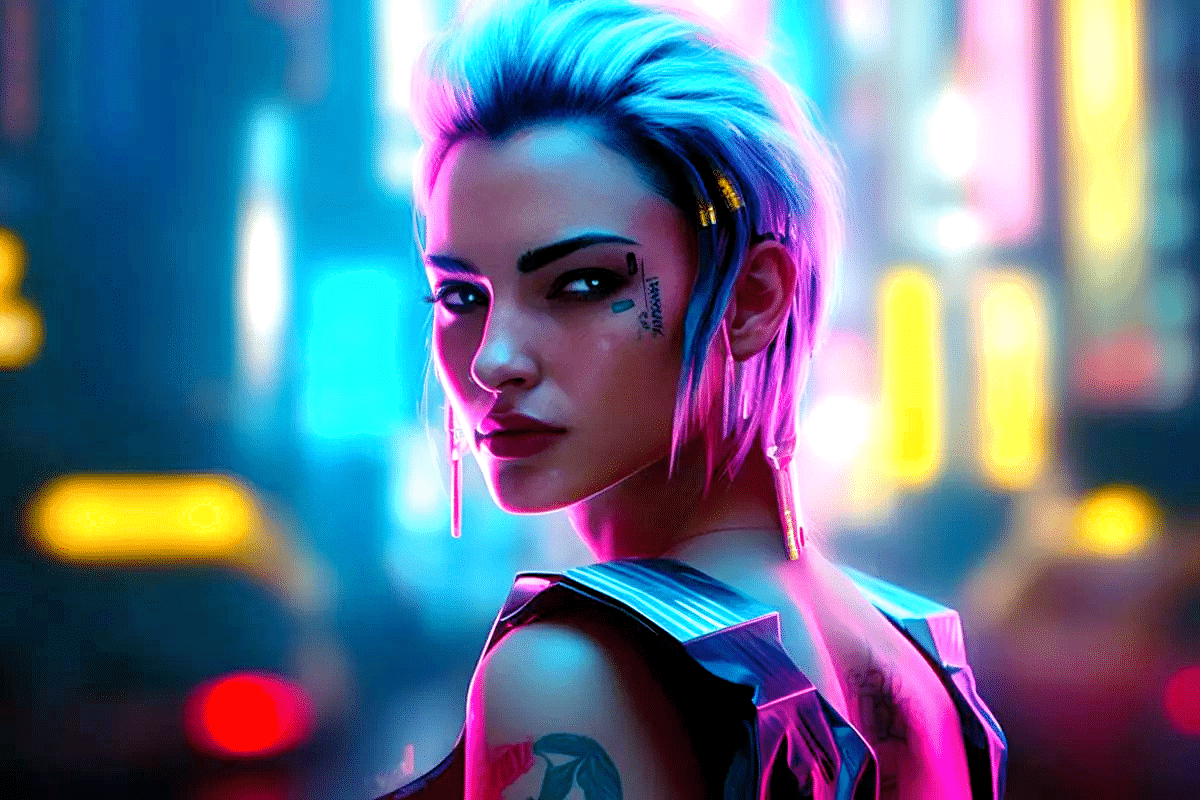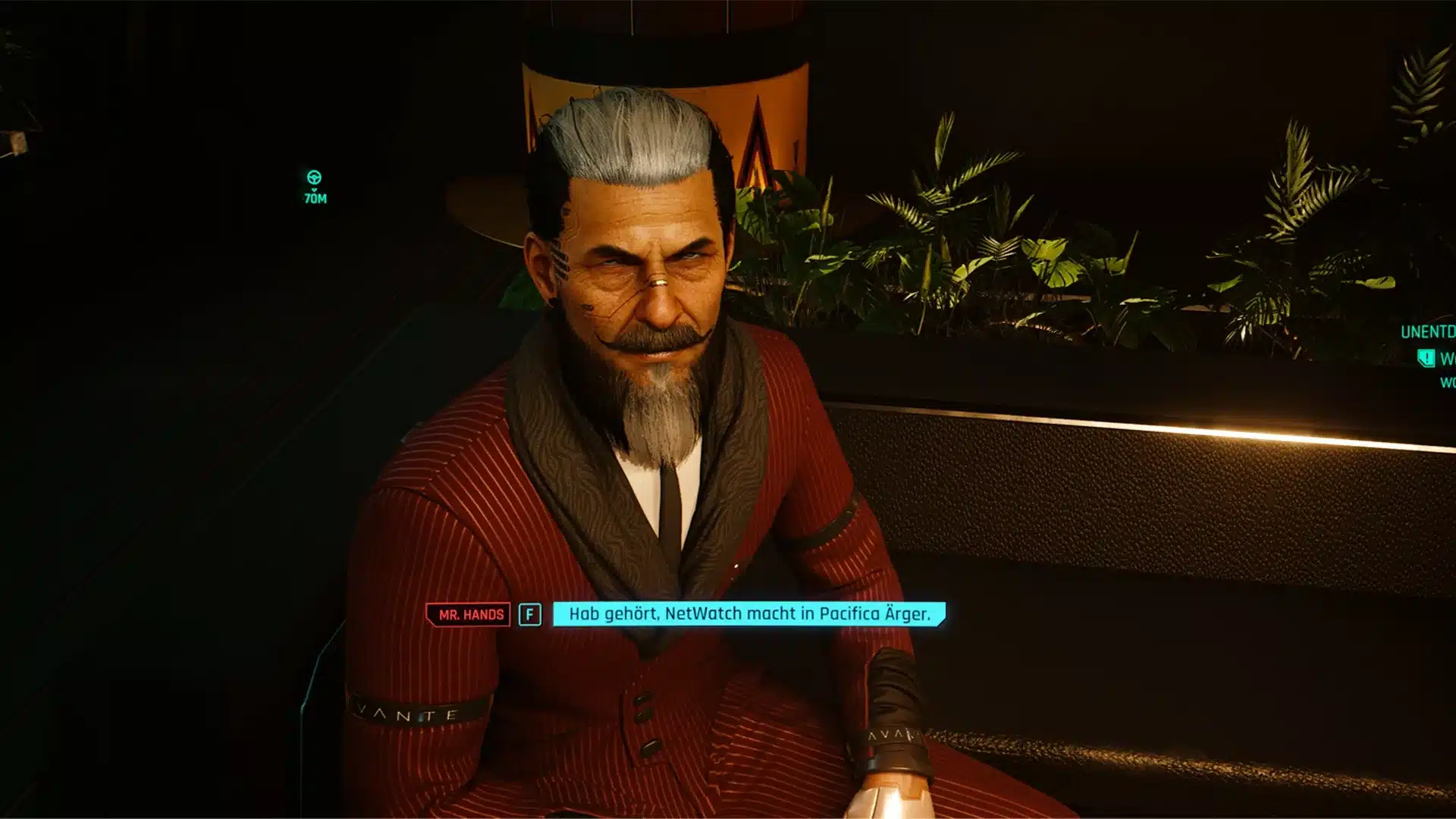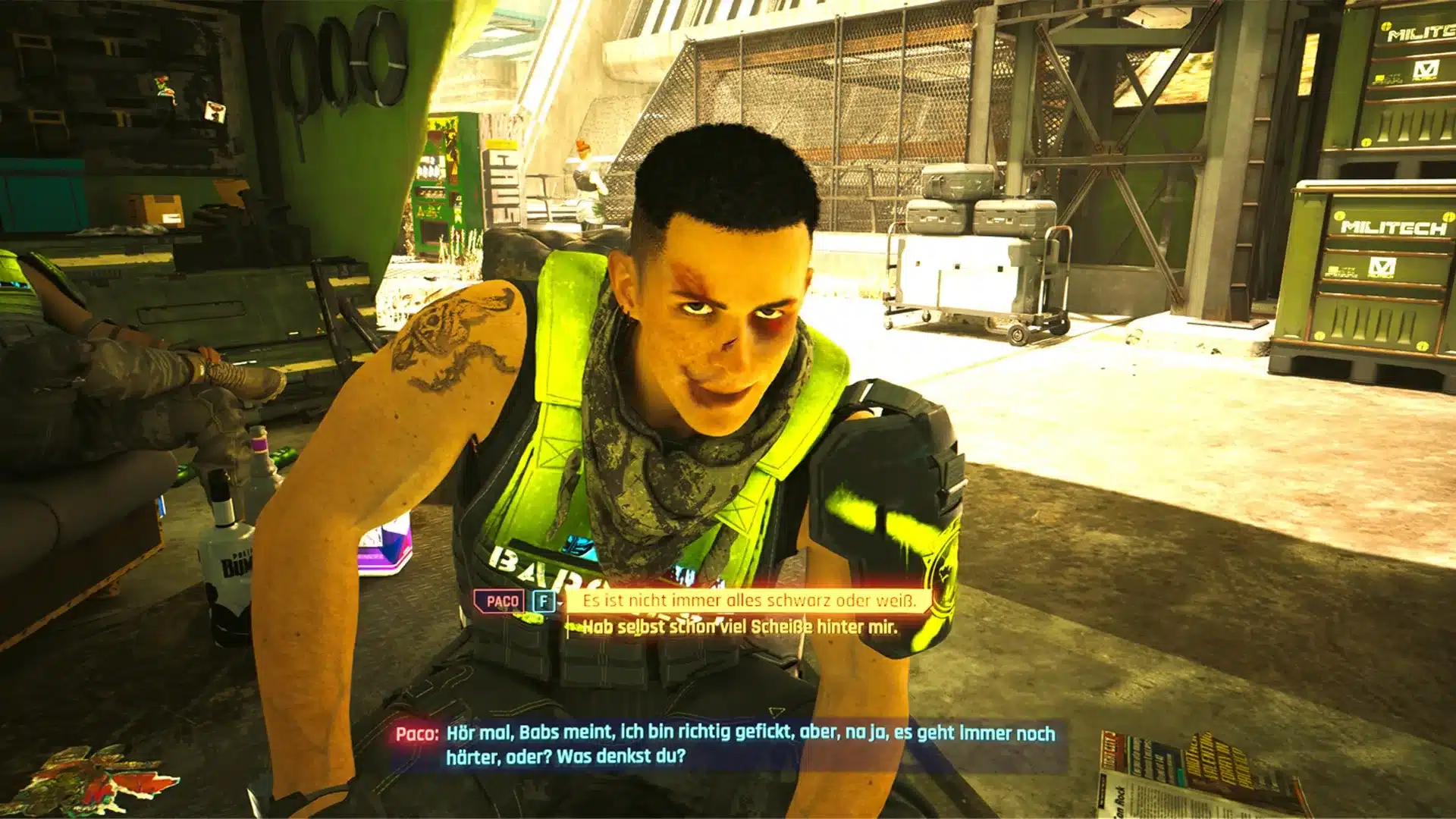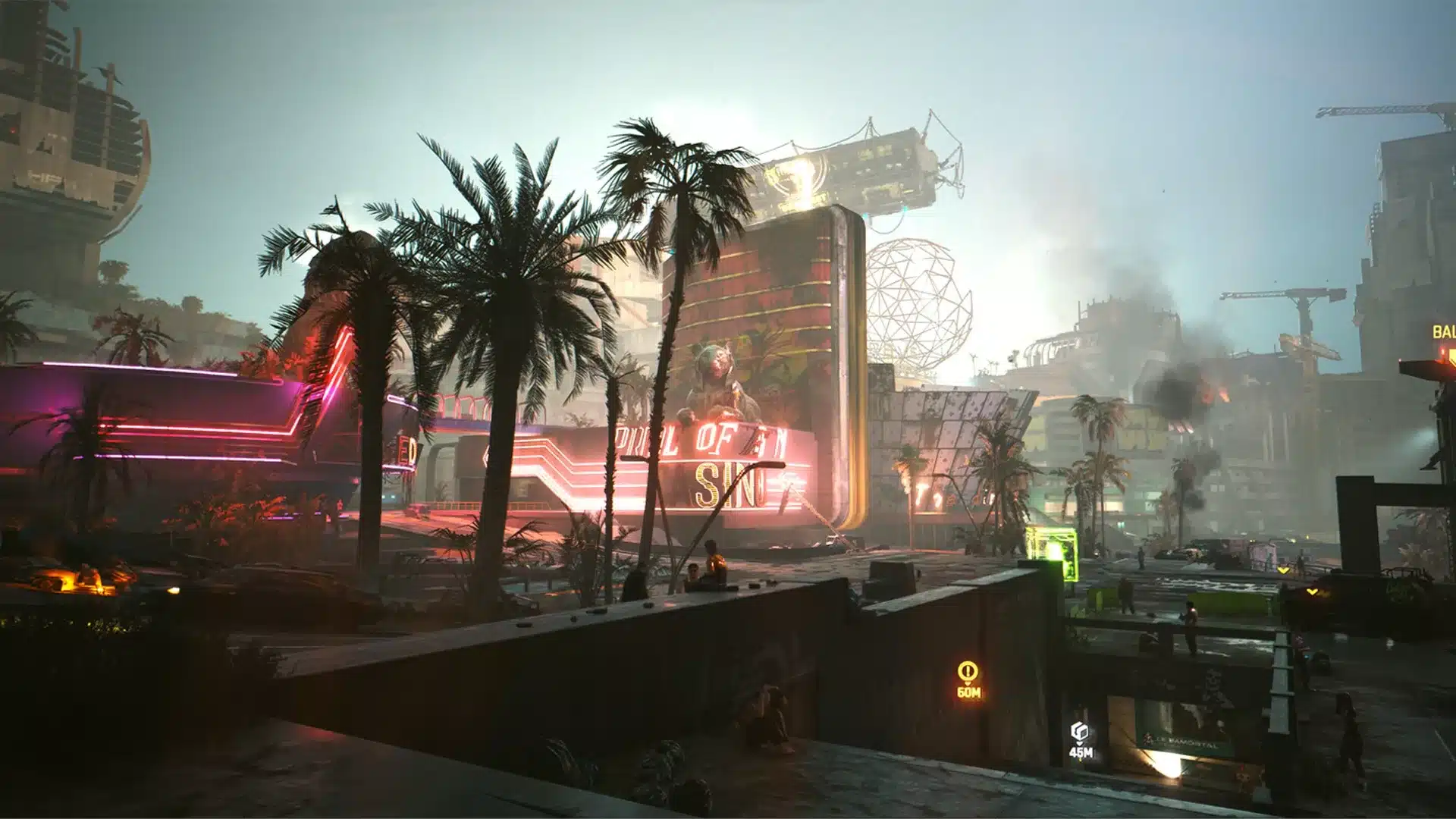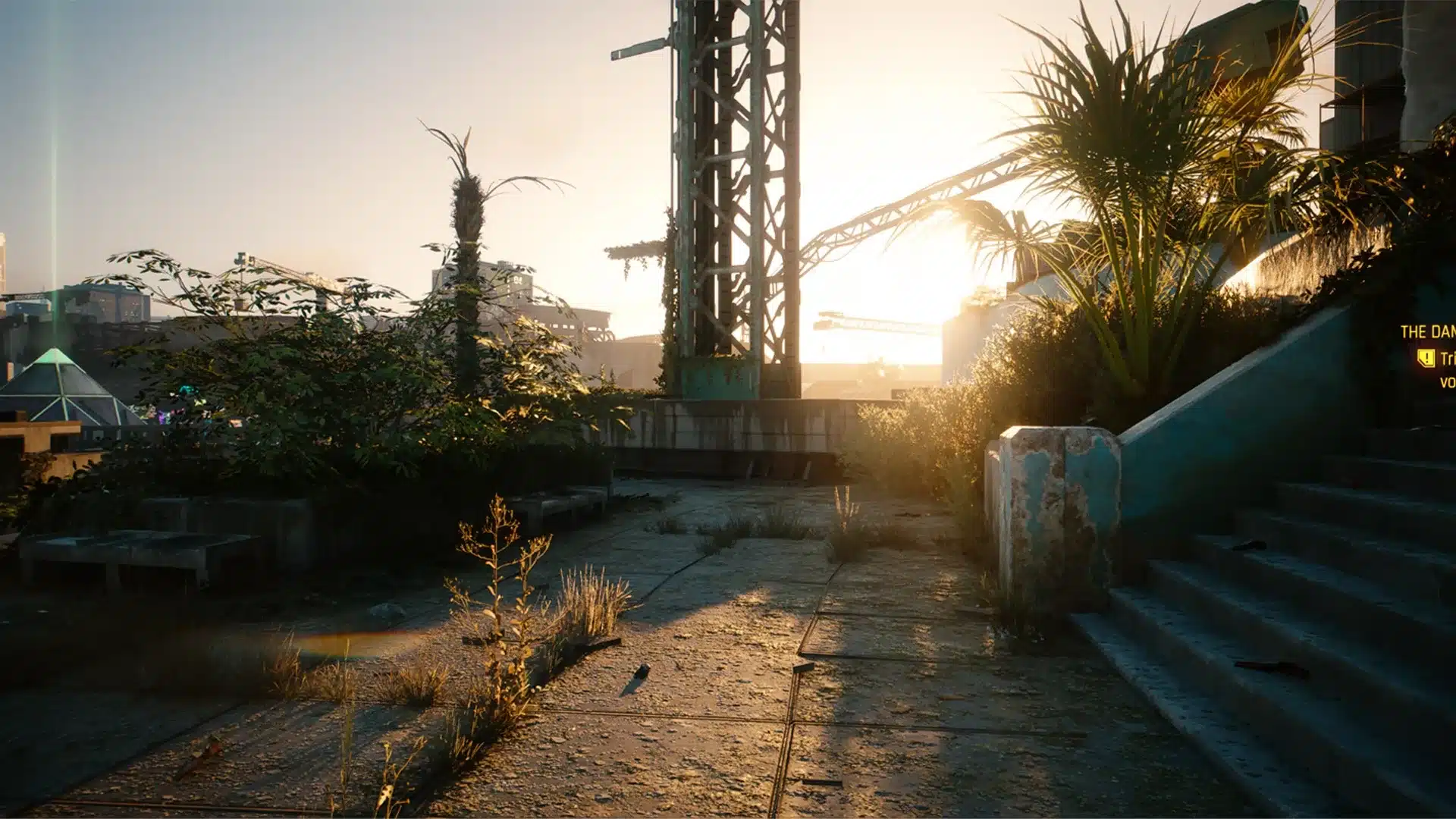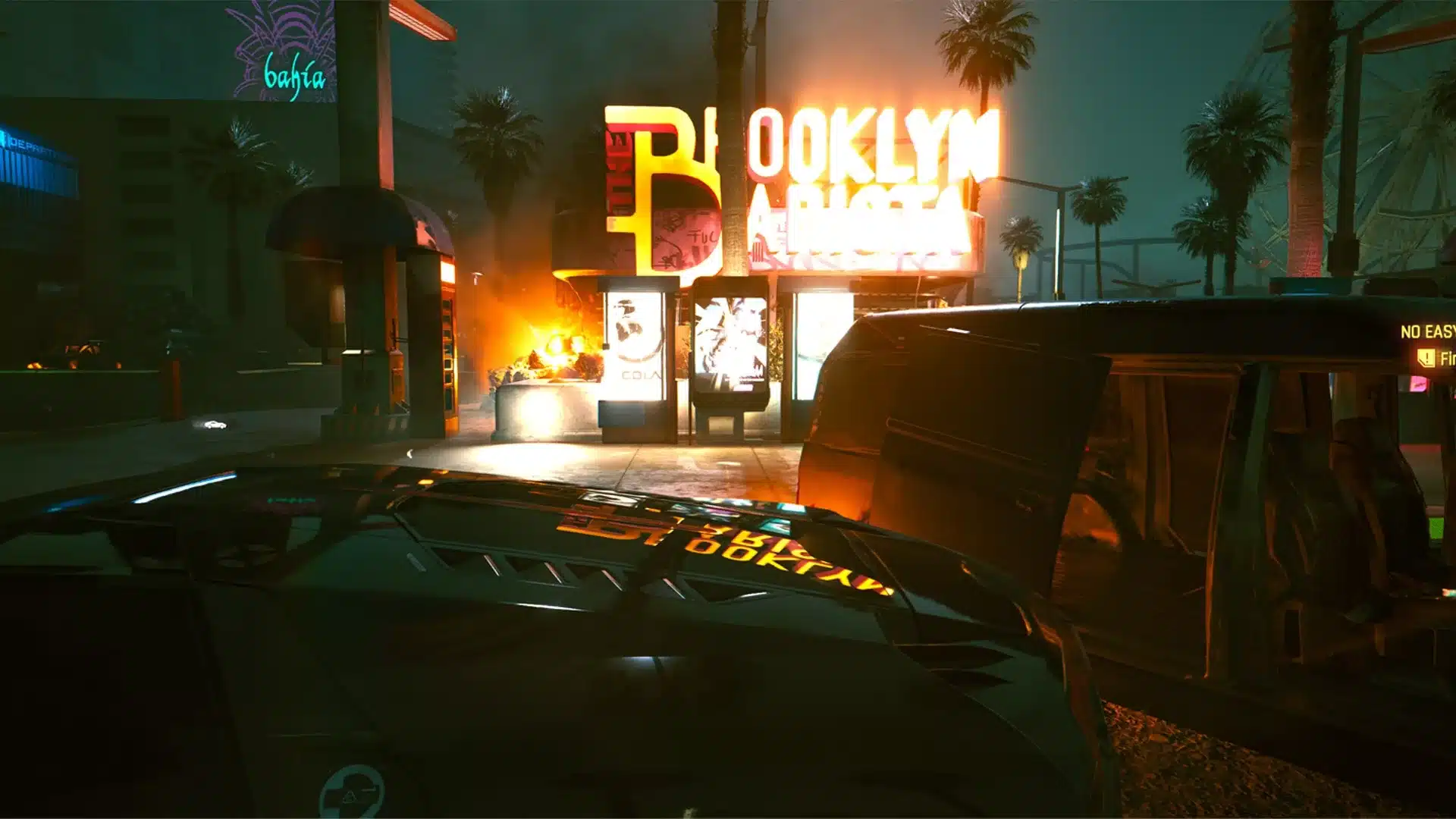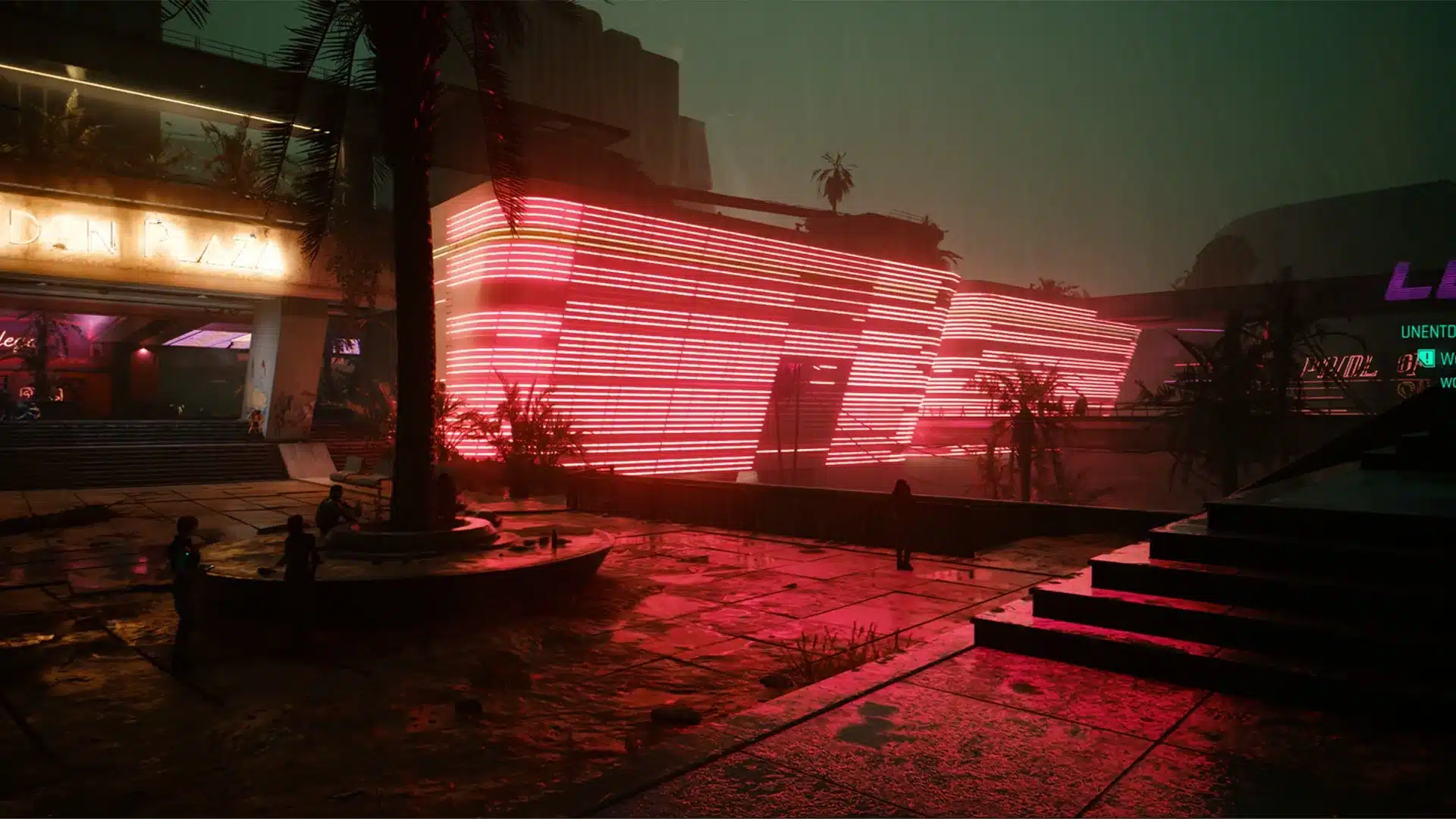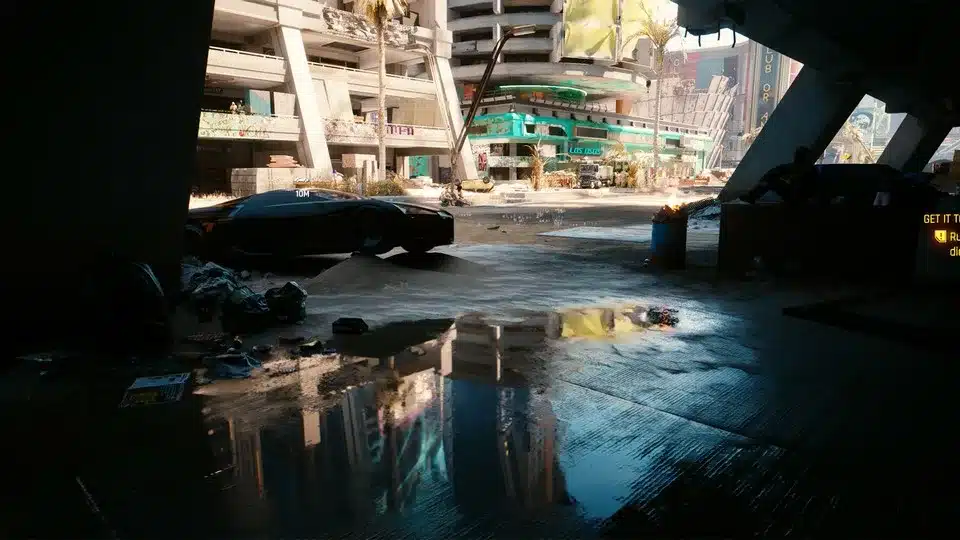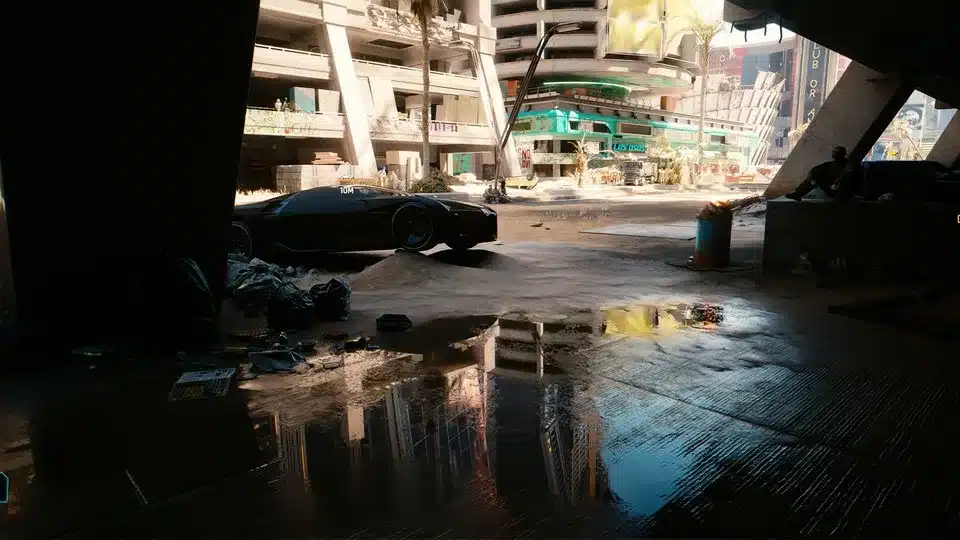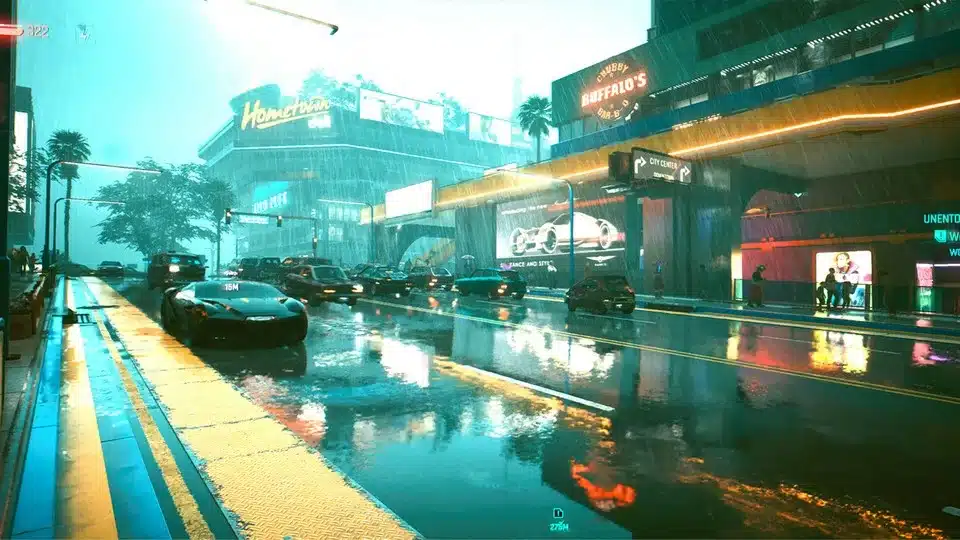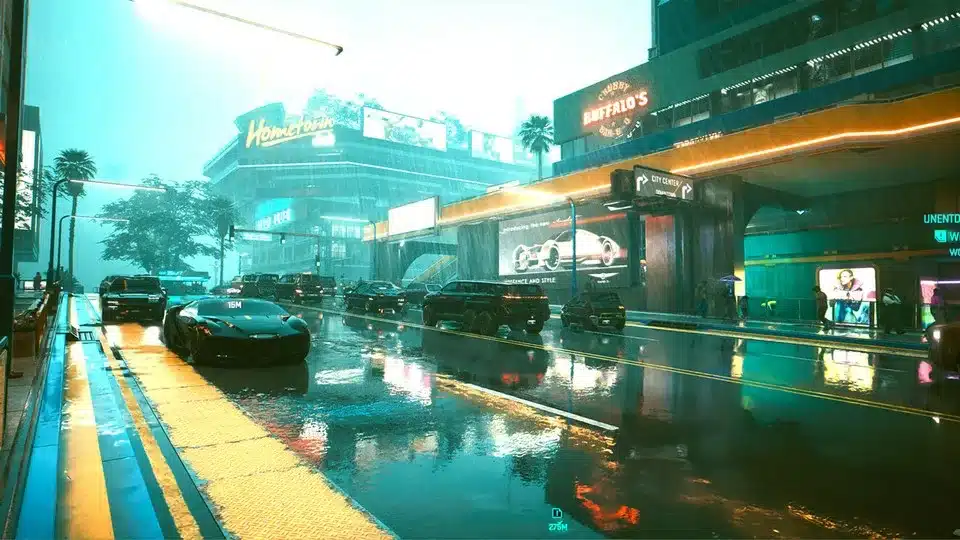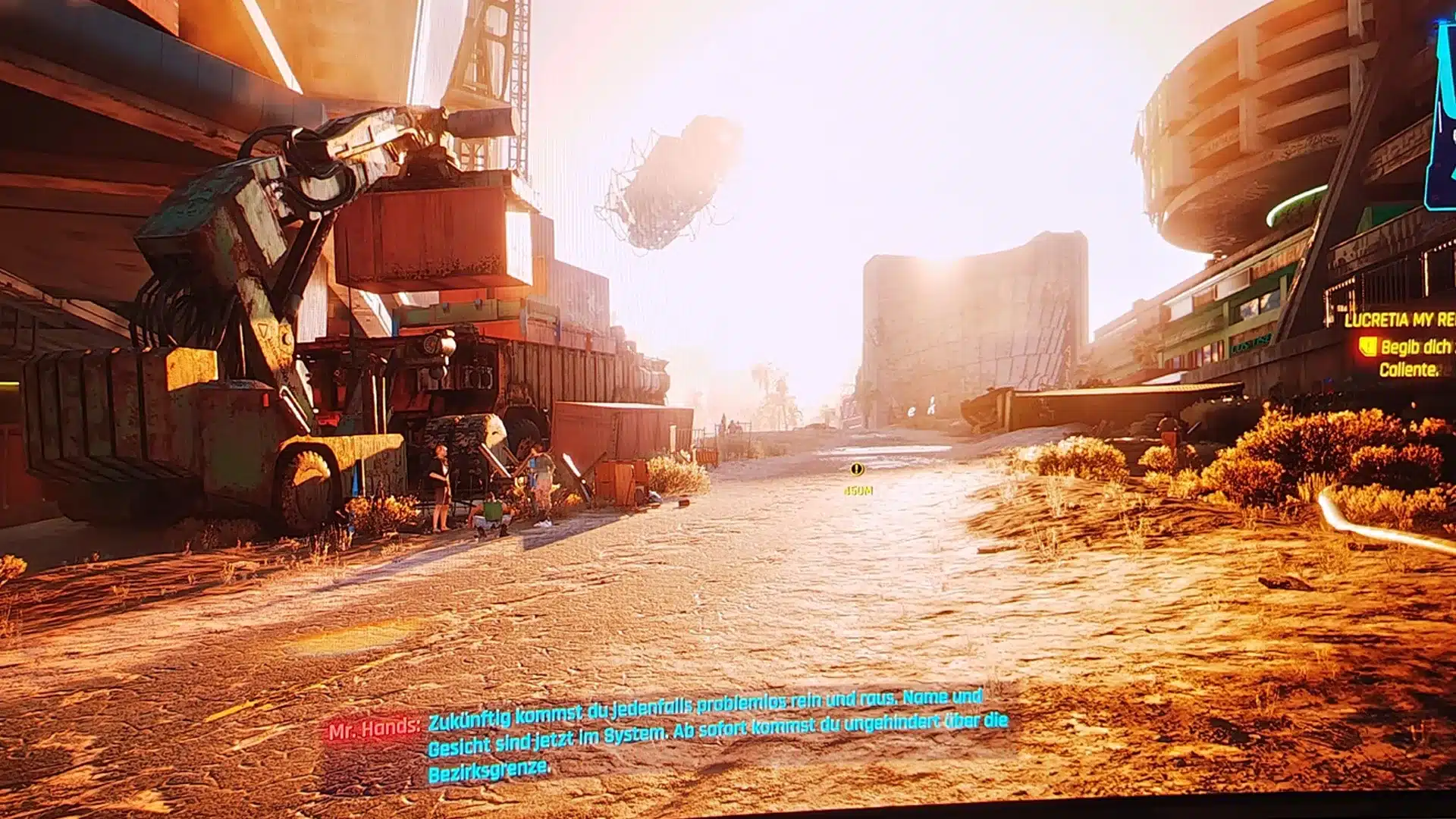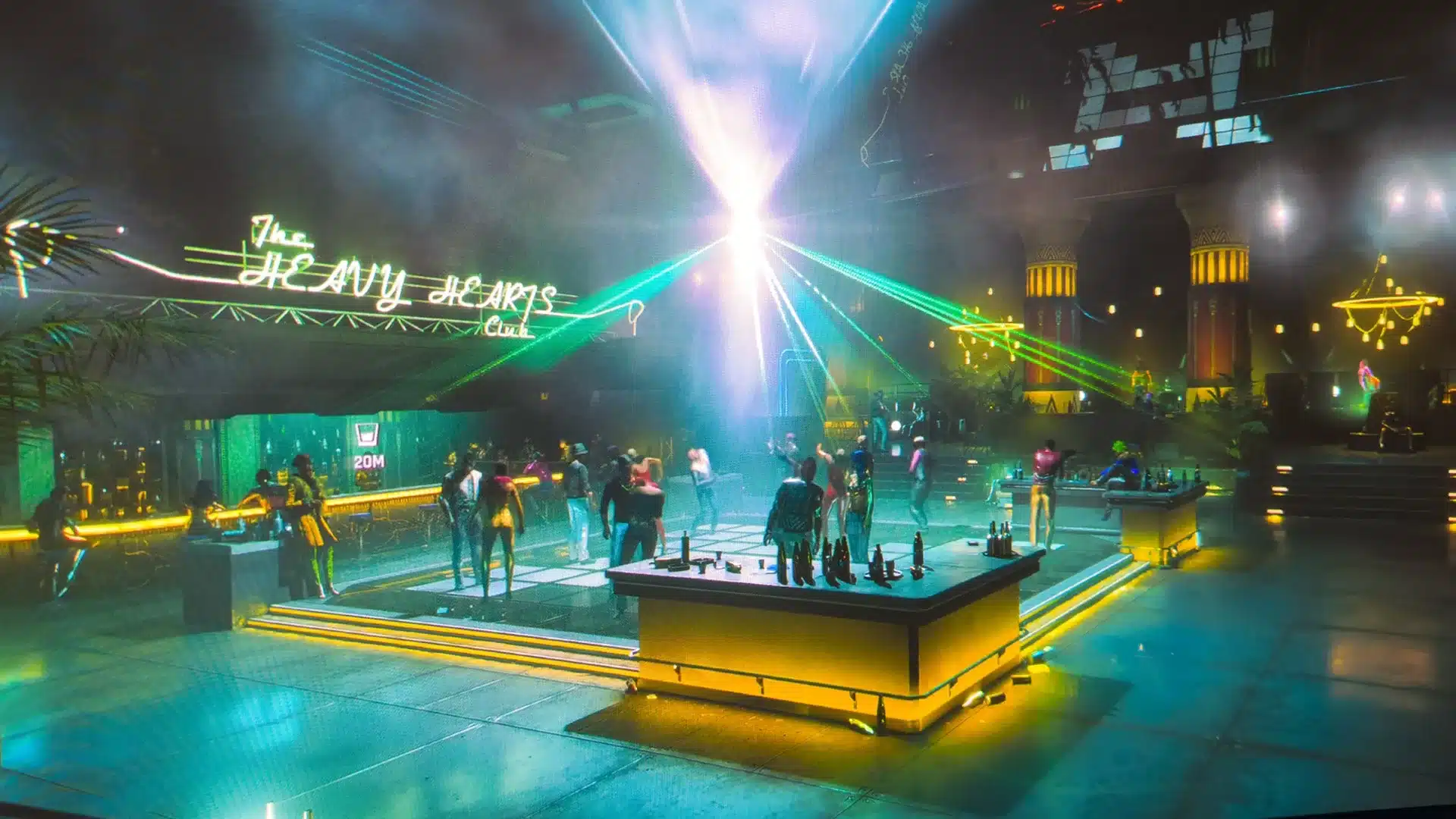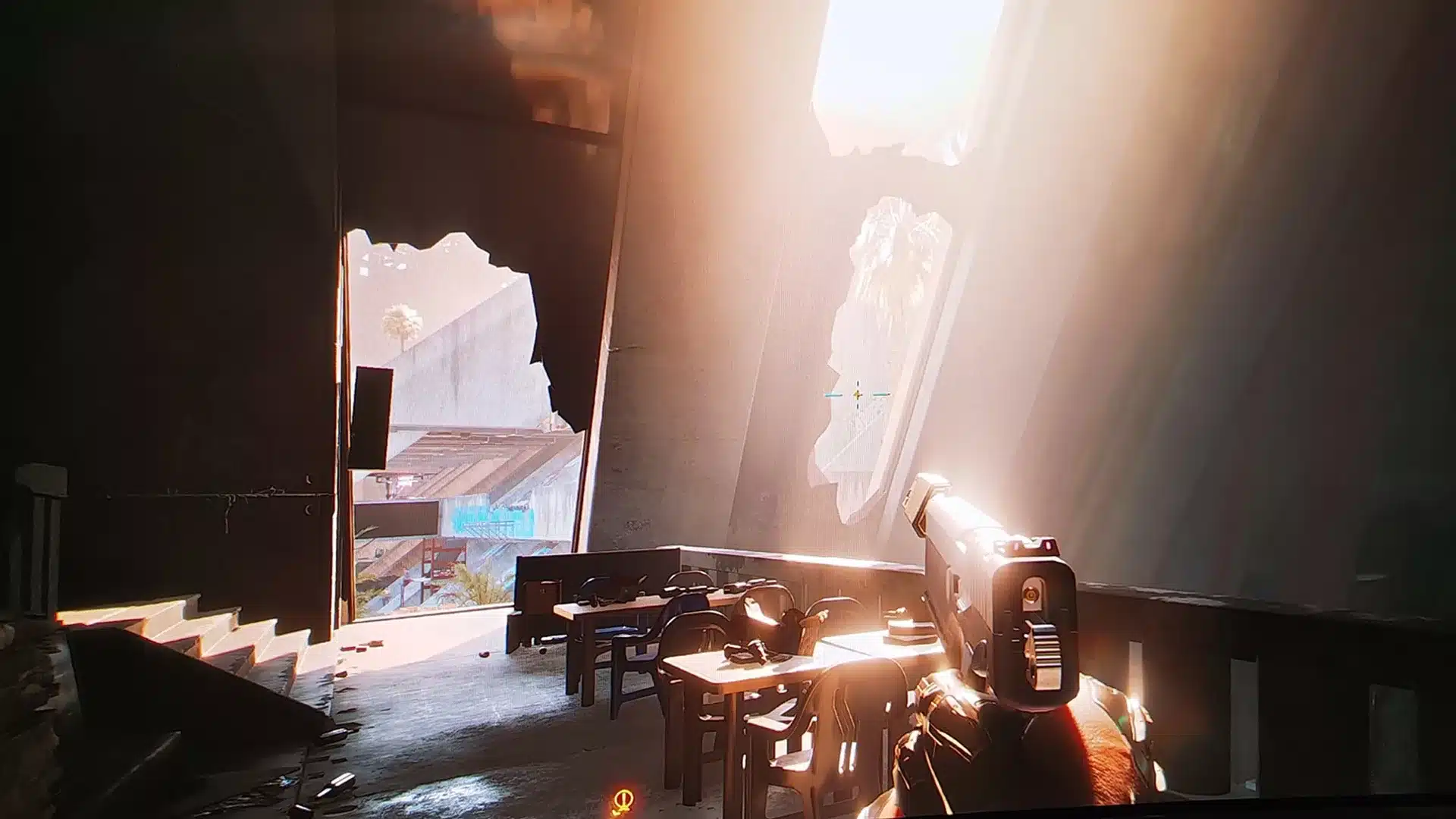We’ve played the Cyberpunk 2077 Phantom Liberty expansion and are positive on a technical level.
Hey Chooms, welcome back to Night City, the beautiful looking dystopia. With Phantom Liberty, developer CD Projekt RED takes you to a new area: Dogtown.
The game will also receive a major update. Unlike the Phantom Liberty expansion, you won’t have to shell out any eddies for version 2.0 of Cyberpunk
But to the elephant in the room: The release of Cyberpunk 2077 in 2020 went anything but smoothly. In addition to small and large bugs, there were also performance problems, especially on the consoles
The good news is that you don’t have to fear a similar fiasco with Cyberpunk 2077: Phantom Liberty, even though there are some minor problems. You can find out exactly how the expansion performs on a technical level here.
This is what makes Cyberpunk 2077: Phantom Liberty stand out on the PC
Let’s work our way through the tech thicket, starting with eulogies.
And we write them with a clear conscience, because: Phantom Liberty does not repeat the mistakes from 2020 and, together with the 2.0 update, also knows how to convince visually.
Table of Contents
We particularly like these points:
- Game flow: Nasty bugs or other major problems that tear you out of the immersive world in Night City are hardly present – that’s our impression after countless hours of play. We have been able to stroll through Dogtown almost undisturbed so far and explore the new area extensively, (main) missions largely went off without a hitch. Largely because a smaller side mission just wouldn’t start. V simply didn’t want to get into the car, despite the comfortable backrest! At a later point, however, V decided to accept the mission after all.
- Performance: The game’s performance was convincing on our test systems. There were no unexpected crashes or annoying FPS drops during longer sessions. It can stay like this!
- DLSS 3.5: With Cyberpunk 2.0, support for the latest DLSS version also comes into play. This provides RTX cards with “Ray Reconstruction”, which, in combination with pathtracing, ensures delicate reflections and lighting as well as shadows with as few image errors as possible. All of these features combined make for a great visual showcase of just how well this technology can work.
- HDR: We turned on HDR for Cyberpunk 2077: Phantom Liberty and are thrilled with the icing on the cake. The contrasts are well worked out thanks to HDR10. Sunbeams through small gaps and cracks in the ceiling or the lights at night look even more powerful. Not infrequently, we stopped and let the scenes take effect on us.
- The Dogtown location: Dogtown offers everything to take a closer look at the technical intricacies from Cyberpunk 2077. From brighter city corners to darker alleys with flashy, ostentatious lighting, it’s all here.
The adjusting screws still need to be pulled here
Yes, our praise could hardly be more resounding, were it not for the famous “but”. Because not everything in Night City, and especially in Dogtown, is perfect, as the facade initially tries to disguise.
Here the developers have to work again:
- Bugs: Waaaas?! Yes, the expansion also struggles with occasional bugs. Besides the aforementioned side mission where V didn’t want to get into the car, there are minor bugs in the game. For example, game editor Valentin quietly eliminates his opponents, whose bodies are still struggling after they die, while V wants to move them aside. And his colleague Alex probably jetted through the city so fast that he fell through the world – just to name a few examples.
- Graphics bugs: Ties in with the previous point. Even with ultra settings and buttery smooth 100 FPS, visual artifacts pop up every now and then.
- Face details: Individual faces and facial expressions (still) look loveless and don’t fit into the otherwise beautiful game. Yet this is not the rule. Many NPCs are finely fleshed out and look very coherent and fitting to the atmosphere.
- Texture details: The majority of Cyberpunk 2077: Phantom Liberty is a visual treat. Period. That’s already the case with the main game. However, the expansion also takes over the small weaknesses and some corners and objects could have a higher resolution of the textures or a bit more detail. But here we are complaining on a high level.
- The AI in combat: Even on high difficulty levels, smaller enemies stand in front of our shotgun every now and then and look stupid until they catch a bullet – without any resistance. Good, now and then they prance to the right and left to confuse us.
- VRAM–Requirement: 12.0 GBytes of VRAM are a minimum for ultra settings including ray tracing. The video memory did not run full in our check, but the memory hunger was at the limit.
Not all NPCs are nicely fleshed out in cyberpunk. Even at maximum detail levels.
We are completely neutral – at least on a technical level – about the new police system. Accidentally running over Night City residents and taking off as if nothing ever happened is nothing more than a lame excuse with the update to Cyberpunk 2.0. The police are targeting you.
Overall, though, we’re neither thrilled nor disillusioned regarding the AI.
Checking the system requirements of Cyberpunk 2077: Phantom Liberty
Our test system at a glance:
- Graphics card: RTX 4070 TI (12 GByte VRAM)
- CPU: Intel Core i7 9700KF
- Memory: 16 GByte DDR4 (3000 MHz)
- SSD hard disk: 1 TByte Samsung 970 EVO NVMe
- Power supply: 750 Watt
- Monitor: QD OLED monitor with HDR10+ support (UWQHD)
With the update to Cyberpunk 2.0 and the Phantom Liberty expansion, the system requirements have changed. According to the datasheet, the game now demands a lot more from your PC, which we can also partially confirm with regard to ray tracing.
However, the increase in requirements can also be explained by the fact that the developers no longer want to test the game on older hardware. This means: If you have been able to play Cyberpunk 2077 so far, your system should also be able to handle the expansion – as long as an SSD hard drive is used.
Because the SSD hard drive will be mandatory according to the developers. At least if you want to experience the game without serious bugs.
If you want to enjoy ray tracing on “Ultra”, 12 GBytes of VRAM are required, whereas the main game gets by with 8.0 GBytes. In our check, we can definitely confirm the larger memory hunger.
With ultra details, including the preset “Raytracing-Ultra”, the game took up just over 11.0 GBytes of VRAM. Dogtown looks all the more beautiful for that:
The situation is different for the working memory and the CPU The manufacturer specifies 20 GB of working memory as a prerequisite to enjoy ray tracing with ultra settings to the fullest. However, according to our measurements, 16 GB RAM is completely sufficient
A 12th generation Intel i9 processor is also recommended as the CPU However, we didn’t experience any noteworthy problems with the installed Intel Core i7 9700KF in our test
It should be noted that we enable DLSS 3.5 as well as Frame Generation in these settings to achieve the highest possible FPS numbers. If we remove the checkmark for Nvidia Frame Generation, the frame rate drops significantly.
The new technology comes with a big catch though:
You’ll need an RTX 4000 card and plenty of steam in the boiler for high resolutions in Cyberpunk 2077: Phantom Liberty. However, an RTX 4080 is recommended, which is due to the VRAM – at least if you want to push the game to the limit.
AMD graphics cards, on the other hand, have the problem of sweating more with ray tracing and pathtracing respectively in Cyberpunk than the Nvidia models, and they don’t support frame generation for a big FPS boost.
Meanwhile, AMD has indeed introduced a counterpart to Frame Generation, more precisely FSR 3 with Fluid Motion Frames (FMF). And FSR 3 is also supposed to come for Cyberpunk 2077. When exactly it is so far, however, is not yet certain.
Pathtracing with Ray Reconstruction
One of the biggest new tech features from Cyberpunk 2077 features DLSS 3.5 with Pathtracing including Ray Reconstruction.
What does the new feature do? In very simplified terms, Ray Reconstruction provides even more delicate lighting and shadow details of NPCs, objects, structures and the entire environment. In addition, image errors that sometimes occur, such as flickering, are better prevented.
In a direct comparison between ray tracing and pathtracing with ray reconstruction, the devil is hiding in the details. Shadows look more realistic and “softer”. The textures have a higher resolution and the lighting also makes a more realistic impression.
It’s worth mentioning that these features, along with the name Raytracing Overdrive in the graphics menu, are meant to be a technology preview. A preview of what we could expect in future game titles and what is partly possible now.
Frametimes and benchmarks
Good news first: We were able to achieve good rates far beyond 60 FPS with our test system thanks to DLSS and Frame Generation. We did not encounter any FPS drops or other annoying problems after more than 20 hours of gaming with the test system. Input lags and streaks were very limited.
We primarily played with a resolution of 3440 x 1440 (UWQHD), both with ray tracing and pathtracing. If we activate pathtracing with frame generation, more than 60 FPS are possible depending on the area:
Without frame generation it looks quite different The FPS drop from triple digits to double digits, mostly below 60 FPS. However, Cyberpunk 2077 remains playable with the hardware we used.
If it should be over 60 FPS even with ray tracing, without using the frame generation, switching to the graphics preset Raytracing Low
helps in our case, as the following measurements show:
Raytracing Low without Frame Generation
Intel i7 9700KF, 16.0 GByte DDR4-3000, Windows 11
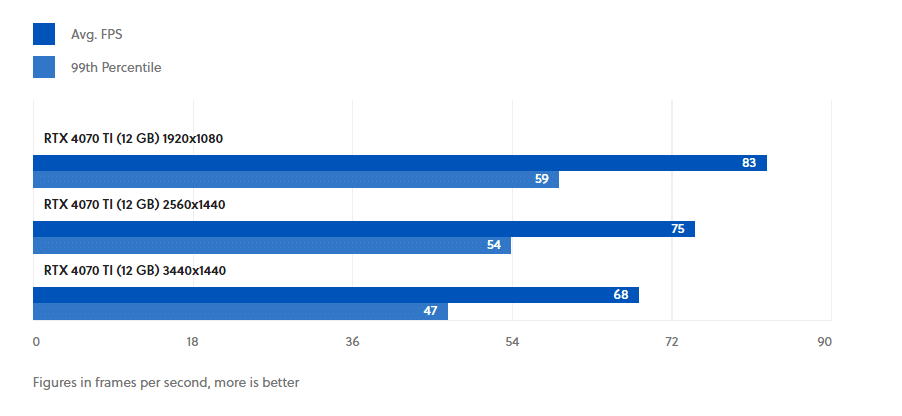
We consider the setting with Raytracing Ultra + Frame Generation to be optimal for our test system. Here we achieve impressive results with up to 100 FPS, depending on the area. Even without the boost from Frame Generation, we achieve values between 40 and 60 FPS.
We really liked ray tracing. However, if you don’t need this feature, you can expect significantly higher frame rates in combination with DLSS, both with and without Frame.
A well-intentioned advice: Turn on HDR
We played Cyberpunk 2077: Phantom Liberty with a QD OLED monitor that is DisplayHDR TrueBlack 400 certified and supports the HDR 10+ format.
This means that the high contrasts and details in Cyberpunk are displayed very well in both the brightest and darkest areas of an image.
Since Cyberpunk 2077 thrives on these nuances and shows off deep shadow details as well as very bright and light effects, the picture looks particularly impressive and magnificent in combination with HDR.
This is only really visible with a suitable display, but the following screenshots can at least give you an idea of what we mean:
However, there is once again a potential catch: Various forums and reports point to problems with enabling HDR in the currently available version. There is often talk of drastic FPS drops in menus, sometimes down to ten frames per second.
In our review of Phantom Liberty, we couldn’t determine such difficulties in relation to the activation of HDR. If you have problems playing with HDR, turn the feature off in the settings of Cyberpunk 2077, maybe it will help.
For everyone else: Turn on the feature, it’s worth it – provided you have a suitable monitor. In our experience, TFTs with the (Vesa certifications) DisplayHDR 1000 and 1400 as well as TrueBlack 400, TruebBlack 500 and TrueBlack 600 primarily deliver really convincing results here.
Summary: Cyberpunk 2077: Phantom Liberty in the first tech check
We are delighted that CD Project Red does not repeat the mistakes from Cyberpunk 2077, on the contrary: The open, impressive world convinces us and the game flow is not marred by unforeseen crashes or nasty bugs.
Also aside from the above-mentioned test system, there were no reports of gross blunders across the editorial team. However, some minor bugs still need to be fixed before the launch on September 26.
During our test, the developer already pushed a huge update with numerous fixes. A whopping 47 GBytes had to be transferred over the network in the meantime. We are therefore confident that in this respect minor ailments will be fixed at launch, even if most likely not all of them.
In its entirety, Cyberpunk 2077: Phantom Liberty delivers a great visual fireworks display that acts as a showcase of sorts to show us what the future can deliver in terms of beautiful graphic details.
If you turn on HDR on top of that (if convincingly supported by the monitor), you should be similarly thrilled by the graphic splendor.
Unfortunately, however, the game doesn’t offer its coolest showcase chrome for every punk out there. Primarily owners of an RTX-4000 graphics card will be able to dive into the game with maximum details at sufficiently high FPS, as Nvidia’s Frame Generation is partly indispensable for this.
The good news: Cyperpunk 2077: Phantom Liberty makes a good impression even without graphics bells and whistles and is a great pleasure to play. In addition, AMD’s new FSR 3 is supposed to find its way into the game sooner or later.
Overall, you can look forward to a nice expansion for one of the most successful story games of the last few years, at least after all the bug fixes. With the Cyberpunk 2.0 update, there’s hardly a better opportunity to finally give the game a chance anyway.

